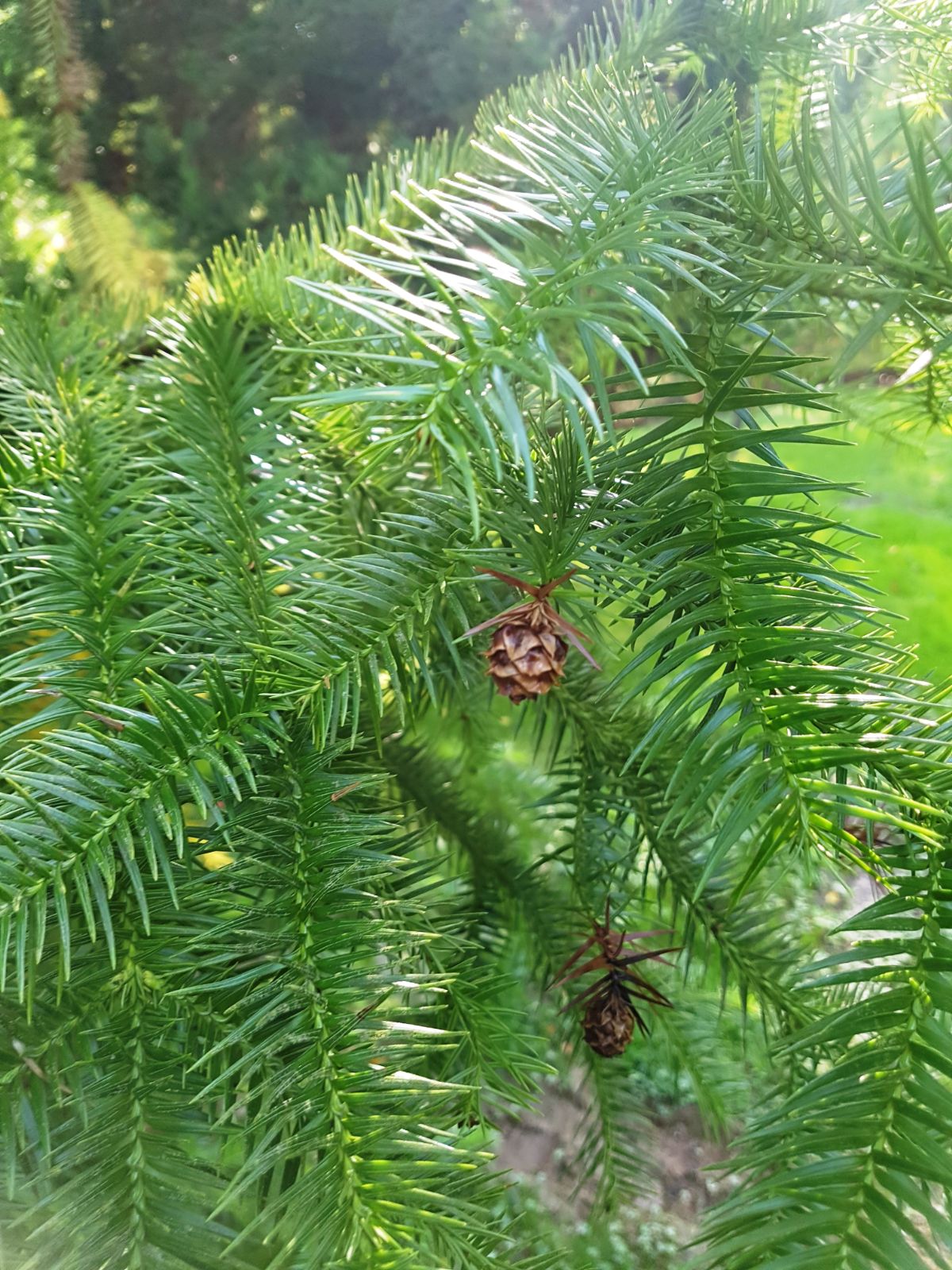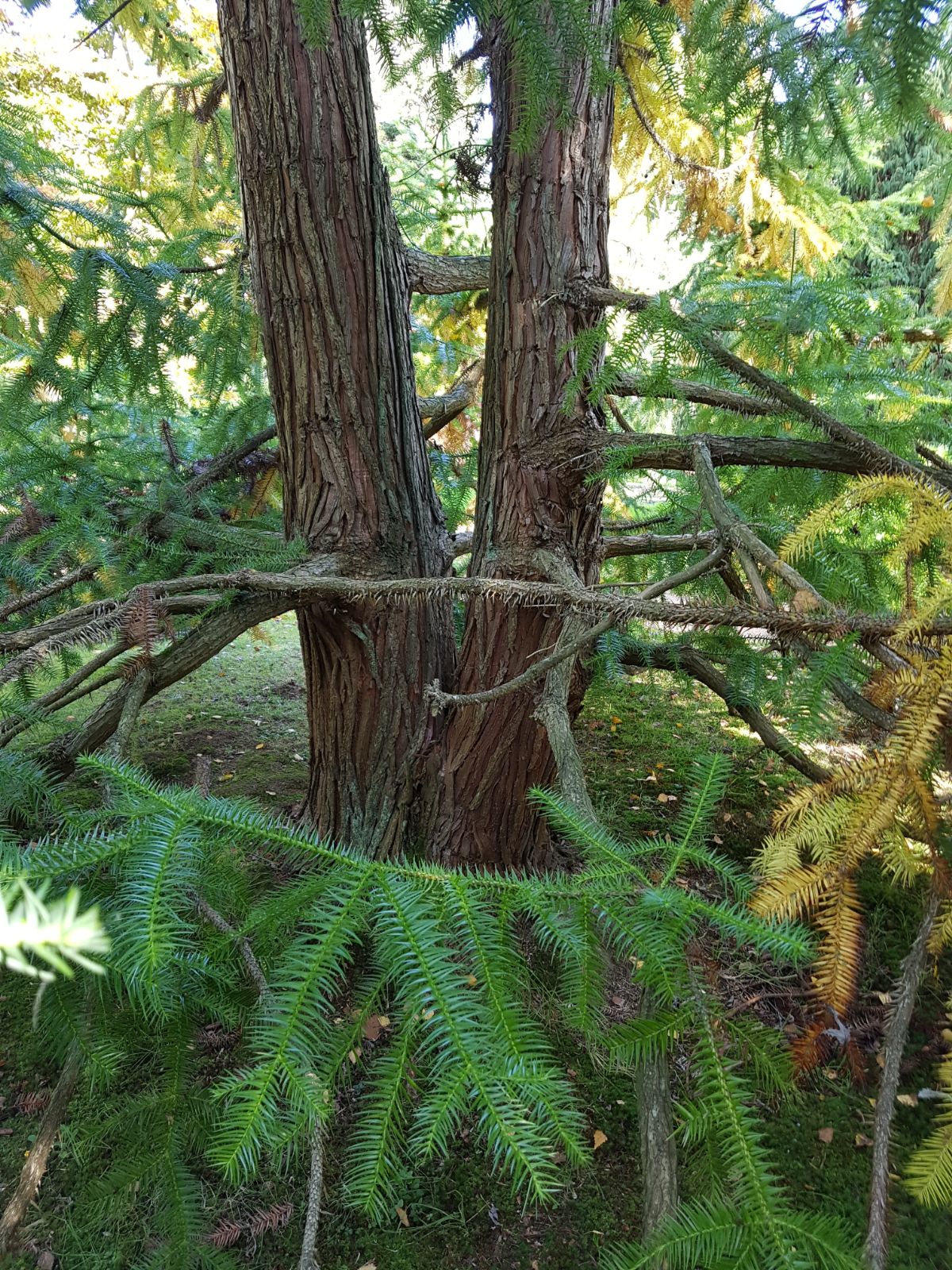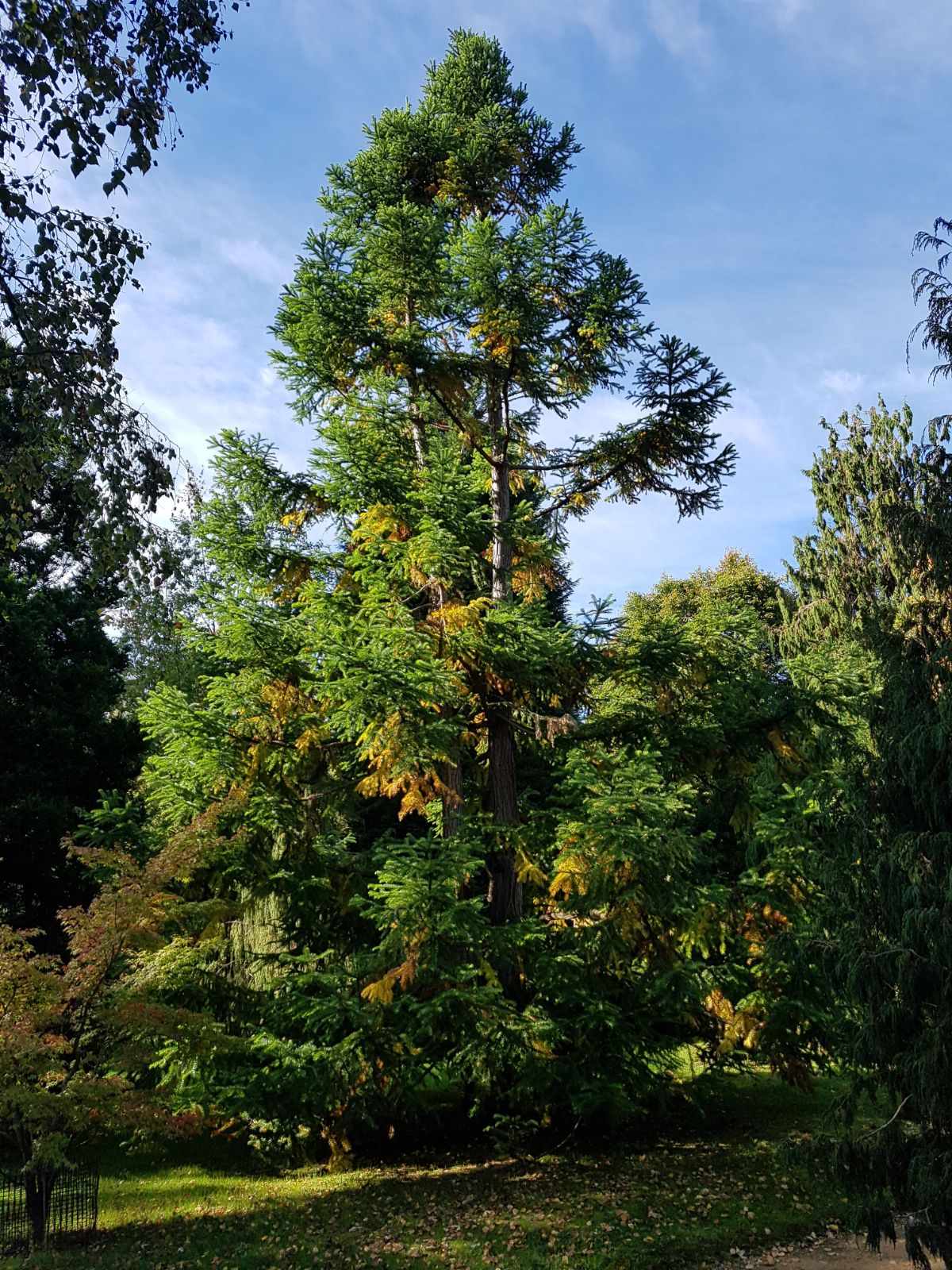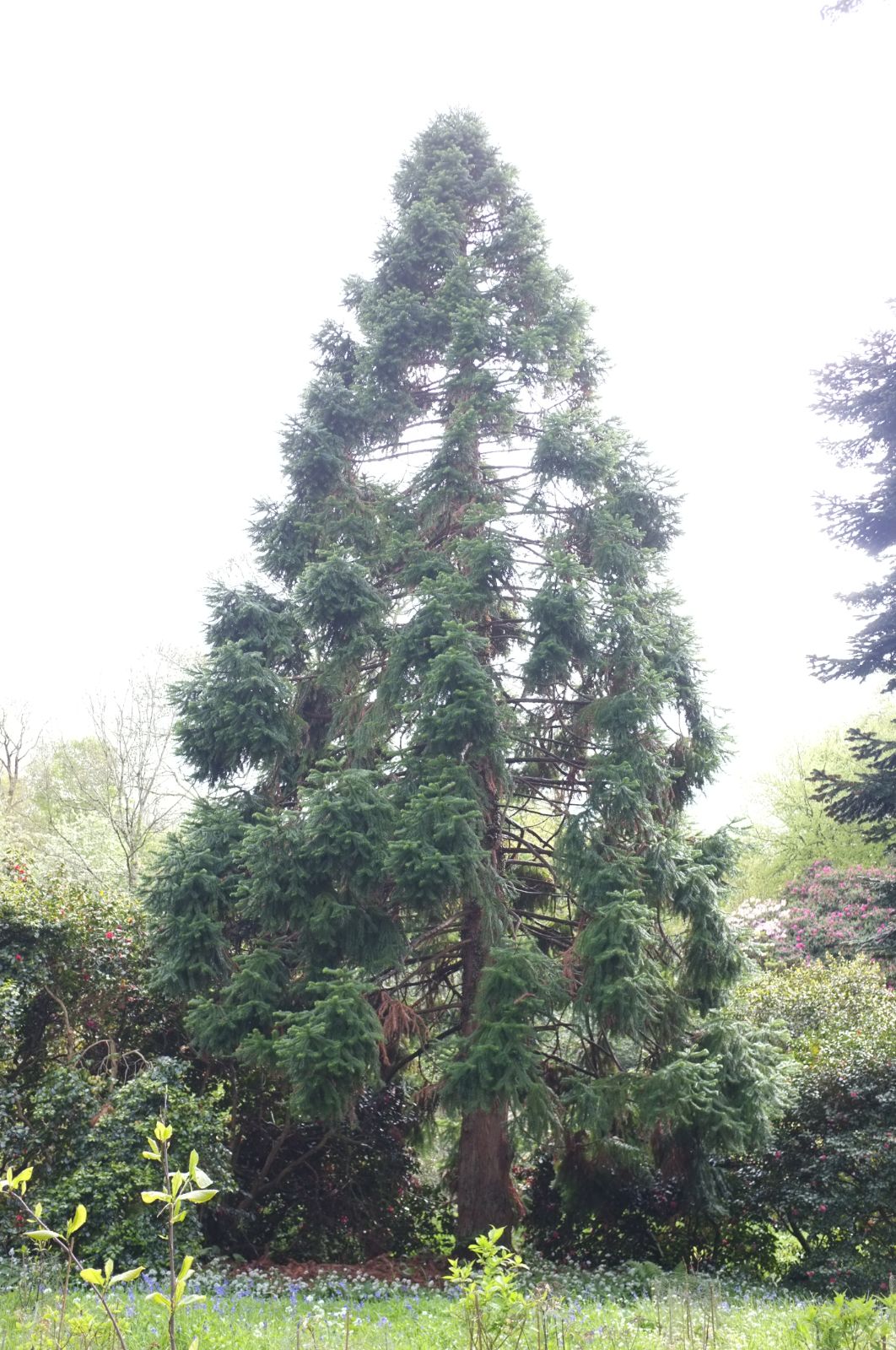Cunninghamia konishii
Credits
Article from Bean's Trees and Shrubs Hardy in the British Isles
Recommended citation
'Cunninghamia konishii' from the website Trees and Shrubs Online (treesandshrubsonline.
Genus
An evergreen tree of large size with reddish-brown bark. Leaves arranged on the twigs in two opposite sets on young trees, but evenly and spirally all round the shoot in mature ones. They are awl-shaped, slender-pointed, up to 11⁄3 in. long and 1⁄8 in. wide at the base on young trees; 1⁄3 to 3⁄4 in. long and 1⁄12 in. wide, stiffer, more leathery and not so slenderly pointed on adult ones; all minutely toothed. On adult trees the leaves have stomata on both surfaces but more abundantly underneath; on the juvenile trees in cultivation stomata occur on the under-surface only. Cones ovoid-conical, 3⁄4 to 1 in. long, scarcely so much wide, the numerous scales ending in a hard, sharp spine.
Native of Formosa; first named in 1908 by Hayata from specimens collected by N. Konishi on Mt Randai at 7,000 ft altitude; introduced by Admiral Clinton-Baker in 1910. It differs from the well-known C. lanceolata by the leaves of adult trees being much smaller, in their standing out all round the branches, and in their having stomata on both surfaces in the adult state; they are said to persist on the branches for eight years instead of about five as in C. lanceolata. The cones, too, are considerably smaller. This species is rare in cultivation and does not thrive so well as C. lanceolata. There are examples of 15 to 30 ft in height at Sheffield Park, Sussex; Woburn, Beds.; Tregothnan, Cornwall; Borde Hill, Sussex; Castlewellan, Co. Down; and in Eire at Headfort, Co. Meath, and Mount Usher, Co. Wicklow.




